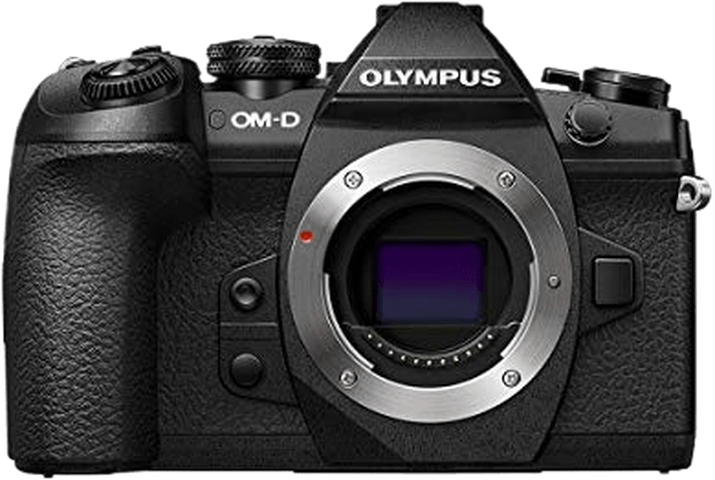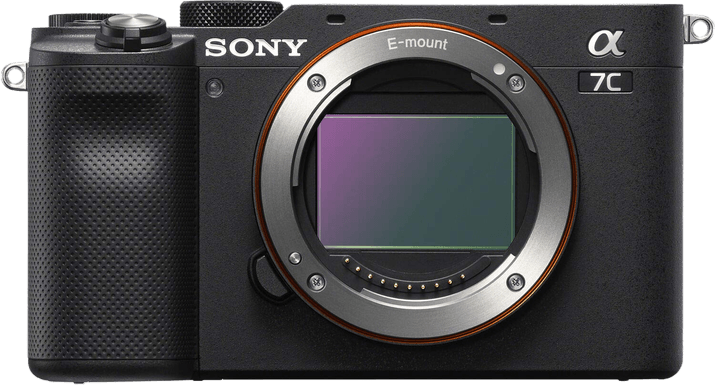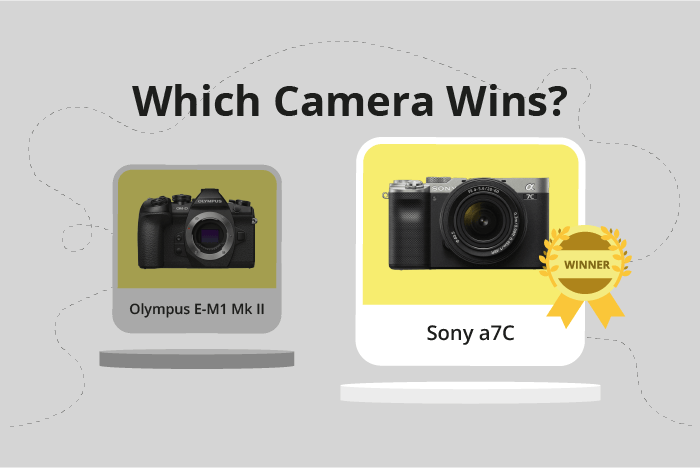Olympus OM-D E-M1 Mark II vs Sony a7C Comparison
Olympus OM-D E-M1 Mark II

Sony a7C

The Sony a7C emerges as the winner with a score of 78/100, while the Olympus OM-D E-M1 Mark II trails behind at 68/100. Both cameras share similarities as mirrorless models, released in 2016 and 2020 respectively. They also have comparable launch prices, with the Olympus priced at $2000 and the Sony at $1799.
The Sony a7C outperforms the Olympus in terms of size and weight, measuring 124 x 71 x 60mm and weighing 509g, making it more compact and lighter than the Olympus, which measures 134 x 91 x 67mm and weighs 574g. This advantage makes the Sony a7C more convenient and portable for photographers on the go.
However, the Olympus OM-D E-M1 Mark II still has merits despite its lower score. Its announcement date in 2016 means that it has been on the market longer, providing users with more time to familiarize themselves with its features and performance.
Comparing these two cameras, the Sony a7C’s compact size, lighter weight, and higher score make it the better option for most photographers. The Olympus OM-D E-M1 Mark II, while still a capable camera, falls short in these areas, but may still appeal to those who prefer a more established model.
Olympus OM-D E-M1 Mark II vs Sony a7C Overview and Optics
The Sony a7C outperforms the Olympus OM-D E-M1 Mark II in optics with a score of 80/100 compared to 68/100. Both cameras share common specifications, such as CMOS sensor type, image stabilization, and a similar shooting speed (60 for Olympus and 10 for Sony). However, the differences in their specifications contribute to the discrepancy in their scores.
The Sony a7C has a higher resolution with 24.2 megapixels, a more advanced Bionz X processor, and a superior DXOMARK sensor score of 95. Moreover, its full-frame sensor size and Sony FE lens mount allow for better image quality and a wider range of compatible lenses. The 3:2 aspect ratio of the Sony a7C also provides a more standard format for photography.
On the other hand, the Olympus OM-D E-M1 Mark II has a lower resolution of 20.4 megapixels, a less advanced TruePic VIII processor, and a lower DXOMARK sensor score of 80. Its Micro Four Thirds sensor size and Micro 4/3 lens mount result in a smaller selection of compatible lenses and potentially less image quality. The 4:3 aspect ratio may not be as versatile as the 3:2 format.
However, the Olympus OM-D E-M1 Mark II does have a significantly faster shooting speed of 60 compared to the Sony a7C’s 10, which could be beneficial for capturing fast-moving subjects or action photography.
Taking these factors into account, the Sony a7C is the superior choice for optics due to its higher resolution, better processor, and larger sensor size. The Olympus OM-D E-M1 Mark II, while not as strong in optics, does offer an advantage in shooting speed for specific situations.
Olympus OM-D E-M1 Mark II vs Sony a7C Video Performance
The Olympus OM-D E-M1 Mark II and the Sony a7C both have a video score of 70/100, indicating that their video capabilities are quite similar. They share some common specifications, including 4K video resolution and time-lapse functionality built-in. However, there are differences in their maximum video dimensions and frame rates that set them apart.
The Olympus OM-D E-M1 Mark II has a higher maximum video dimension of 4096 x 2160 compared to the Sony a7C’s 3840 x 2160. This means the Olympus camera can produce videos with slightly higher resolution and more detail. Despite this advantage, the Olympus E-M1 Mark II has a lower maximum video frame rate of 24fps, which may not be ideal for capturing fast-paced action.
On the other hand, the Sony a7C offers a higher maximum video frame rate of 30fps, allowing for smoother video playback and better handling of fast-moving subjects. This can be a significant advantage for videographers who need to capture dynamic scenes. However, the a7C’s lower maximum video dimensions mean that the overall image quality may not be as detailed as the Olympus E-M1 Mark II.
Both cameras have their own strengths and weaknesses when it comes to video capabilities. The Olympus OM-D E-M1 Mark II offers higher video resolution, while the Sony a7C provides higher frame rates for smoother video playback. Users should consider their specific video needs and preferences when choosing between these two cameras, as each has its unique advantages to offer.
Olympus OM-D E-M1 Mark II vs Sony a7C Features and Benefits
The Sony a7C outperforms the Olympus OM-D E-M1 Mark II with a feature score of 81/100 compared to 70/100. Both cameras share common specifications, such as a 3-inch screen size, touchscreen functionality, flip screen, no GPS, and WIFI connectivity.
The Sony a7C surpasses the Olympus OM-D E-M1 Mark II with its Bluetooth capability, making it more convenient for transferring files and remote control of the camera. This added feature contributes to the Sony a7C’s higher score.
However, the Olympus OM-D E-M1 Mark II has a higher screen resolution at 1,037,000 dots compared to the Sony a7C’s 921,600 dots. This advantage allows for a clearer and more detailed display when reviewing images and navigating menus. Despite this advantage, the Olympus OM-D E-M1 Mark II still falls short in overall features compared to the Sony a7C.
The Sony a7C’s higher feature score and additional Bluetooth functionality make it the superior camera in terms of features. While the Olympus OM-D E-M1 Mark II offers a higher screen resolution, it is not enough to surpass the Sony a7C’s overall performance. Therefore, the Sony a7C is the better camera based on features alone.
Olympus OM-D E-M1 Mark II vs Sony a7C Storage and Battery
The Olympus OM-D E-M1 Mark II outperforms the Sony a7C in storage and battery with a score of 57/100, compared to the Sony a7C’s 45/100. Both cameras accept SD, SDHC, and SDXC memory cards. However, the Olympus OM-D E-M1 Mark II has the advantage of two memory card slots, while the Sony a7C has only one.
The Sony a7C surpasses the Olympus OM-D E-M1 Mark II in battery life, offering 740 shots per charge compared to the Olympus’s 440 shots. Additionally, the Sony a7C uses the NP-FZ100 battery and has USB charging capabilities, whereas the Olympus relies on the BLH-1 battery without USB charging.
Despite the Sony a7C’s longer battery life and USB charging, the Olympus OM-D E-M1 Mark II emerges as the superior camera in terms of storage and battery due to its dual memory card slots. This feature provides greater flexibility and convenience for photographers, making the Olympus OM-D E-M1 Mark II the better choice in this category.
Olympus OM-D E-M1 Mark II vs Sony a7C – Our Verdict
Are you still undecided about which camera is right for you? Have a look at these popular comparisons that feature the Olympus OM-D E-M1 Mark II or the Sony a7C:

